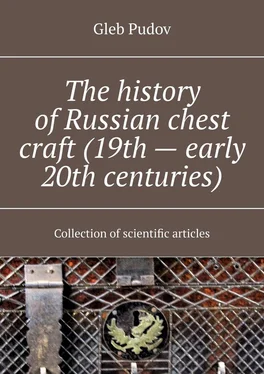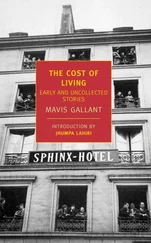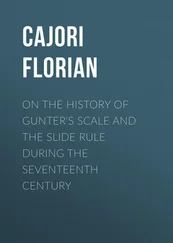Gleb Pudov - The history of Russian chest craft (19th – early 20th centuries). Collection of scientific articles
Здесь есть возможность читать онлайн «Gleb Pudov - The history of Russian chest craft (19th – early 20th centuries). Collection of scientific articles» — ознакомительный отрывок электронной книги совершенно бесплатно, а после прочтения отрывка купить полную версию. В некоторых случаях можно слушать аудио, скачать через торрент в формате fb2 и присутствует краткое содержание. ISBN: , Жанр: russian_contemporary, на английском языке. Описание произведения, (предисловие) а так же отзывы посетителей доступны на портале библиотеки ЛибКат.
- Название:The history of Russian chest craft (19th – early 20th centuries). Collection of scientific articles
- Автор:
- Жанр:
- Год:неизвестен
- ISBN:9785005637178
- Рейтинг книги:5 / 5. Голосов: 1
-
Избранное:Добавить в избранное
- Отзывы:
-
Ваша оценка:
- 100
- 1
- 2
- 3
- 4
- 5
The history of Russian chest craft (19th – early 20th centuries). Collection of scientific articles: краткое содержание, описание и аннотация
Предлагаем к чтению аннотацию, описание, краткое содержание или предисловие (зависит от того, что написал сам автор книги «The history of Russian chest craft (19th – early 20th centuries). Collection of scientific articles»). Если вы не нашли необходимую информацию о книге — напишите в комментариях, мы постараемся отыскать её.
The history of Russian chest craft (19th – early 20th centuries). Collection of scientific articles — читать онлайн ознакомительный отрывок
Ниже представлен текст книги, разбитый по страницам. Система сохранения места последней прочитанной страницы, позволяет с удобством читать онлайн бесплатно книгу «The history of Russian chest craft (19th – early 20th centuries). Collection of scientific articles», без необходимости каждый раз заново искать на чём Вы остановились. Поставьте закладку, и сможете в любой момент перейти на страницу, на которой закончили чтение.
Интервал:
Закладка:
The «podgolovnik» is an object made of wood, most often oak. It is shaped like a box with a beveled lid. As a rule, the lid consists of two parts, which are connected by hinges: a narrow one, located parallel to the bottom, and a wide, inclined one. The proportions of the podgolovniks were not the same. They ranged from very exquisite pieces to massive large chests. From the inside, the chests were divided by wooden plates into several compartments (their number is not strictly defined), often boxes were hung on the inner walls, equipped with an additional system of locks 51 51 As in items from the collections of the State Museum Reserve «Alexandrovskaya sloboda» (inv. № D 1479) and the State Rostov-Yaroslavl Architectural and Art Museum Reserve (inv. № D-1249).
. There are metal handles on the side walls of the podgolovniks. Products were upholstered with iron strips, either openwork or solid. Mica or green (sometimes red or of both colours) cloth was placed under them. A shaped iron plate protected the key hole. It was often decorated with engraving. Among the slotted metal ornament, sometimes there are inscriptions indicating the year of creation of the thing and the master (or owner) 52 52 «Podgolovnik» from Kirillo-Belozersky Museum, on which the initials and date of creation are inscribed: 1771 (inv. № D-118).
. On the inside of the lid or on the walls of the northern items, you can find a painting 53 53 The collection of the State Historical Museum, for example inv. № ГИМ 43803 (Гончарова Н. Н. Русские расписные сундуки XVII—XVIII веков в собрании Исторического музея. – М.: ГИМ, 2018. – (Золотой фонд Исторического музея). С. 108—111).
. In the description of the property of the boyar Fyodor Shaklovity (XVII century) it is stated: «… Kolmogorsky podgolovnik, painted in gold, upholstered with white slotted iron…» 54 54 Розыскные дела о Федоре Шакловитом и его сообщниках. – М., 1893. – Т. 4. – разд. паг., стб.112.
.
It should be noted that the decoration of the «podgolovnik» was different. In most cases, it depended on the customer. There are both richly decorated items, and very modest in an artistic sense.
The «podgolovnik» served to store documents, valuables, money, letters, and they were placed under the traveler’s head on the way (this is considered an explanation of the name of this type of chests). The member of the Swedish embassy Iohann Keelburger wrote: «Podgolovniks are not made to be written on, because they are upholstered with various tinned iron hoops; Russians, on the other hand, write both in colleges and elsewhere, never except on their knees; but such podgolovniks are made for travelers for winter period and are very convenient for laying under the head in a sleigh, because it is known that they tend to put almost a bed in Russian sleighs». However, this purpose of the podgolovniks was not the only one. There are cases when they were the subject of equipment for hunters and were taken on the hunt.
Podgolovniks were common in all strata of the population: they were found in peasant huts, in the houses of the townspeople, and in the chambers of the highest nobility, and in the royal mansions 55 55 Костомаров Н. И., Забелин И. Е. О жизни, быте и нравах русского народа / авт. послесл. С. О. Шмидт. – М.: Просвещение, 1996, С. 42, 307.
. Such items have been made for a long time not only in the Russian North, but also in other regions of the country.
It is often stated that «podgolovnik» is a typical Russian product 56 56 Гилодо А. А. Сундуки ( http://www.sundook.ru/article/a02.html#sn10 ).
. This is not entirely true. A similar form of chests existed in many European countries (although the purpose of the items was sometimes different). Let us consider Russian «podgolovnik» against the background of foreign works.
In the collection of the department of folk art of the Russian Museum there is a «podgolovnik» 57 57 Inv. № М-4.
, manufactured in 1750. It is of big size (34x55x42), the outer surfaces are upholstered with leather and smooth iron strips arranged as a grid. Inside each «cell» there are slotted rosettes with mica lining. In the corners of the lid and the top wall there are slotted strips in the form of triangles. On the face of the castle, in a zigzag frame, the inscription is engraved: «1750 September 23rd day of srk ivan chyupyatov». On the side walls there are curly handles. Inside «podgolovnik» there are twelve compartments, eight of which are with drawers. The «podgolovnik», which is probably of Kholmogory origin, is notable for its solidity and reliability. The symmetry of the ornament, its clarity, contribute to this impression. The main intention of the master was the direct purpose of the product as a repository of valuable items and documents. The general artistic solution of this chest is characterized by masculine roughness, severity, against the background of which all ornamental delights look like optional additions 58 58 Confirmation of this is the «podgolovnik» from the collection of «Artistic culture of the Russian North» (inv. № Гф 346). It is decorated with multi-colored straw, the main motives are geometric: triangles, stars, rhombuses, etc. Decorating techniques and materials, unusual for this type of product, in this case led to an artistically ambiguous result.
.
There is an interesting «podgolovnik» of small size (14.5x16.0x9.5) in the collection of the Sergiev Posad Museum Reserve 59 59 Inv. №3972-д.
. According to museum attribution, it was made in the 18th century in the village Pavlovo, Gorbatovsky district. The item is made of oak, tinted, bound with solid iron strips, between which there are four metal openwork plates (on the lid). The latter resemble a human figure with arms spread out to the sides. Under the pads there are pieces of red mica. There is a mortise lock on the front wall of the chest, and molded handles on the sides. The article in question is interesting not only as evidence of the widespread use of chests (they were made not only in the Russian North), but also as an illustration of their rich artistic potential. In contrast to the work from the department of folk art, the chest of the Sergiev Posad Museum Reserve is distinguished by its special privacy, even being like a toy, a kind of coziness in its external look.
English product («desk box», in a private collection) 60 60 Fiske J. When oak was new. English furniture & daily life 1530—1700. – Ipswich, Massachusets: The Belmont press, 2013, p. 47.
is similar to the Russians’ in design and form. But other aspects are significantly different. The item is decorated with skillfully made carvings, consisting of images of dragons, rosettes, tulips-like flowers. The cover is flat. The product was used for writing 61 61 In the Russian North, inkpots in the form of «podgolovnik» were made from copper alloys in the 17th century (for example, in the collection of the State Russian Museum: inv. № ДРМ 3228). This may indicate not only the original purpose of Russian chests called «podgolovnik», but also the ways of penetration of this type of chest products into Russia.
. The clarity, compositional balance of the ornament, confidently carved images testify to the experience of the master, his high professionalism.
Another english product (dated 1580—1620) which is now in the collection of the Victoria and Albert Museum 62 62 Inv. № W.4:1, 2—1911.
is also interesting. It is made of oak inlaid with boxwood and bog oak (eight drawers inside are made of poplar). The upper part and the hinged lid of the product are decorated with strips of checkerboard ornament. Images of buildings in the style of decorative motifs adopted on «nonsuch» chests are placed on the front, back and side walls. Each side also has an inlaid image of an eight-pointed star. There is a metal mask on the front wall. This «podgolovnik» has different proportions compared to the previous one (it also served as a writing instrument). It testifies to the stability and «flexibility» of the form of this type of english chest products, to the variety of their decoration. English craftsmen in the 19th century made such items, decorated not only with mosaics from multi-colored pieces of wood, but also with patterns borrowed from «Berlin» woolen products 63 63 For example, from the collection of the Victoria and Albert Museum, inv. № W.3: 1 to 7—1925. Textile items (clothing and interior elements) decorated with cross-stitch embroidery using «Berlin wool» were called «Berlin» products. thin, brightly colored woolen threads.
.
Интервал:
Закладка:
Похожие книги на «The history of Russian chest craft (19th – early 20th centuries). Collection of scientific articles»
Представляем Вашему вниманию похожие книги на «The history of Russian chest craft (19th – early 20th centuries). Collection of scientific articles» списком для выбора. Мы отобрали схожую по названию и смыслу литературу в надежде предоставить читателям больше вариантов отыскать новые, интересные, ещё непрочитанные произведения.
Обсуждение, отзывы о книге «The history of Russian chest craft (19th – early 20th centuries). Collection of scientific articles» и просто собственные мнения читателей. Оставьте ваши комментарии, напишите, что Вы думаете о произведении, его смысле или главных героях. Укажите что конкретно понравилось, а что нет, и почему Вы так считаете.












